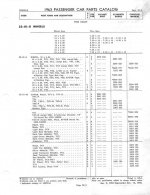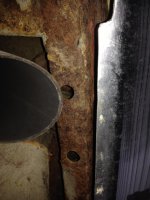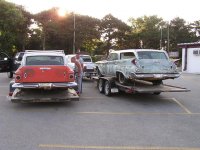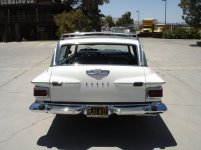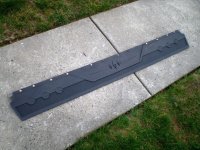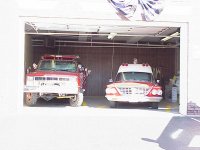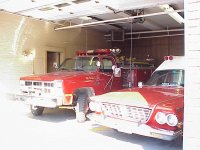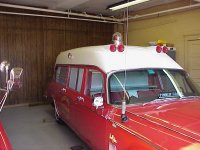It could very well be a mud flap, and full width mud flaps were available back in the 1960's.
Looking at the picture that you posted last of the car while in service, I don't see any shadow that would have indicated that the rear step was on the car at that time. There are a few things that I know about having a rear step like shown in one of your pictures, is that it makes it very difficult loading a cot over the step, even if the step makes it easier to climb into the rear through the rear door. My 1978 had a rear step, and it was a major pain, because people were constantly bumping their shins on the rear step. It was way too long for the purpose intended.
I don't know for sure, however, I have to believe that the rear step was removed very soon after the car arrived, because where the car was parked in the fire station, it was extremely tight. When I returned to the Rhinecliff fire station with the car, I was allowed to back the car into its original place. I no longer have the pictures, but if I did, you would see exactly what I am referring to. The car had to be back to the point where it was almost touching the rear wall, and there had to be enough space between front of the car and the overhead door, to walk by to get to the other equipment. With the rear step in place, the front of the car would have been very close to the overhead door, and getting by it would have presented a problem. The apparatus that was parked next to the car also had to be placed close to the rear wall, since the car was at an angle, and it needed the space to be able to pull out for a call. If the apparatus next to it were not back far enough, there wouldn't be enough space to drive the ambulance out without first moving the apparatus.



